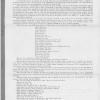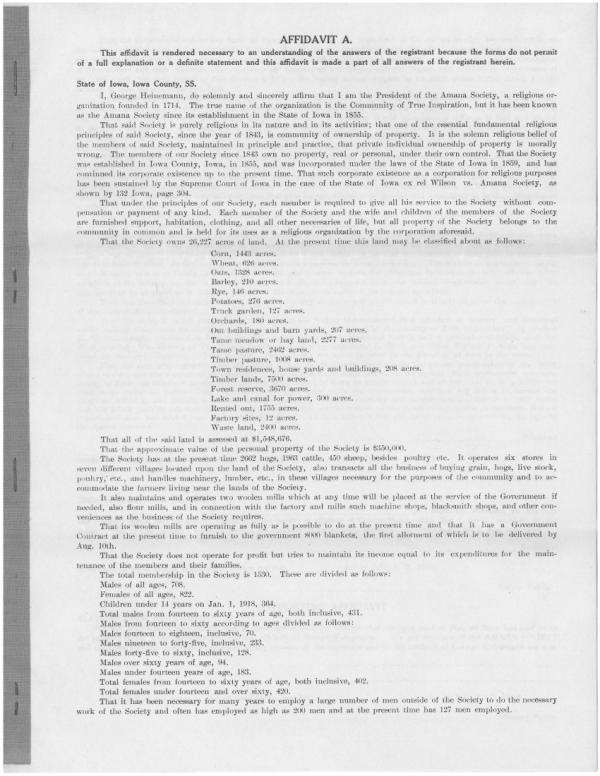Iowans During WWI
| Grade | 9th -12th Grades | Class | U.S. History | Length of Lesson | 50 minutes |
| Lesson Title | Iowans During WWI |
| Unit Title | WWI on the Homefront |
| Unit Compelling Question | How did Americans respond to the U.S. choice to get involved in WWI? |
| Historical Context: 2018.040.008 George Heinemann, the president of the Amana Colonies, filled out this affidavit during World War I. The Amana Colonies was a religious and pacifist community that wished to avoid becoming involved in the conflict. This affidavit was one of many legal documents that the Amana Colonies submitted to the government in order to support its pacifist views and desire to stay out of the war. The members of Amana believed strongly in pacifist views. They stayed out of European affairs before immigrating to the United States and continued after settling in New York and Iowa. Amana was excused from fighting during the Spanish American and Civil War by paying commutation fees to support Iowan soldiers in their place. The pacifist belief was met with disagreement by Iowa County residents as Amana men were sent home from Marengo in July of 1917 after being orginally chosen for the draft in WWI. In January of 1918, the classification status of Amana residents was changed from 1 to 4, mean that they were deferred from fighting. Their place would be taken by other Iowa County men. Believing this was an act of disloyalty, angry Marengo residents marched to South Amana in protest, however the mob was stopped one mile outside of South Amana. After WWI, the exemption of Amana residents from being drafted was rescinded. Despite their pacifist beliefs, the colonies supported the troops by donating to the Red Cross, using Liberty Bonds and War Savings Stamps. The Amana Woolen Mill also produced 35,000 blankets for troops. In total, Amana gave approximately $2,000 per resident to the war effort. |
|
| Lesson Supporting Question | |
| Lesson Overview | Students will be looking at people from the Amana colonies and how they responded to the U.S. choice to get involved in WWI. |
| Primary Sources Used |
|
| Resources Needed | Laptops Pencil Notebook https://iowamuseums.pastperfectonline.com/webobject/AD0227CB-6629-4535-BE63-628964269793 Question sheet |
| Standard | |
| Lesson Target | Students will analyze primary sources.;Students will be able to discuss the primary source they analyzed and create an opinion on the subject matter the source covers. |
| Lesson Themes | Communal Groups, World War I |
|
| Formative Assessment (How will you use the formative assessments to monitor and inform instruction?) |
My formative assessment will be through the think-pair-share discussion that occurs following their discussion within their groups. I will be assessing to see how well students analyzed the source and how well they are understanding and discussing the material. |
| Summative Assessment (How does the lesson connect to planned summative assessment(s)?) |
Exit ticket worksheet with open ended questions. I will be looking to see if students read the document and were able to form an opinion on the content discussed. What we discussed in our think-pair-share will be very helpful to them in the summative assessment. |
| Author | Alexander Johnson | Created | Last Edited | ||||
| Reviewer: Chad Christopher, History Education, University of Northern Iowa | |||||||
| Lesson Plan Development Notes: Teaching Methods, University of Northern Iowa, Spring 2019 | |||||||


